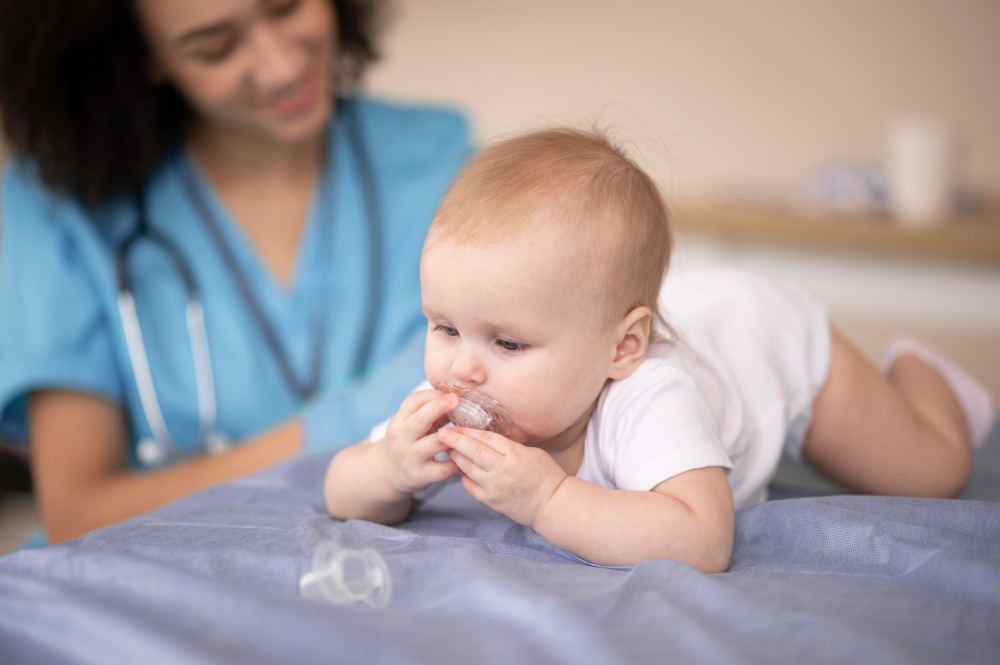Jaundice In Babies When To Worry: What Parents Need to Know!
Are you a new parent who has noticed your newborn’s skin taking on a yellowish hue? Are you concerned about the possibility of jaundice in babies when to worry? Do you want to know more about this common condition so that you can provide the best care possible for your little one? If so, you’ve come to the right place! Let’s explore the world of newborn jaundice together and gain expert insights and guidance on how to keep your baby healthy and happy.
Here’s a sneak peek at what we’ll cover in this comprehensive guide:
- Unpacking the symptoms and causes of jaundice in babies
- Knowing when it’s time to seek medical care for jaundice in babies
- Tips on managing and treating jaundice in babies effectively
- Understanding the different types of jaundice in babies and their implications
- Practical advice for preventing and addressing jaundice in infants
Empower yourself with the knowledge needed to navigate the nuances of jaundice in babies when to worry confidently and ensure your baby’s health is in good hands.
Jaundice In Babies When To Worry

Jaundice is a common condition that affects many newborn babies. It occurs when there is an excess of bilirubin in the baby’s blood, leading to a yellowing of the skin and eyes. Bilirubin is a yellow substance that is produced when red blood cells break down. The baby’s liver usually processes and removes bilirubin, but in some cases, the liver may not be able to keep up with the production, resulting in jaundice.
It’s important for parents to be aware of jaundice and its symptoms, as well as when to seek medical attention. While jaundice is often a normal occurrence in newborns, it can sometimes indicate an underlying issue that requires further evaluation. Monitoring jaundice symptoms is crucial to ensure the baby’s well-being.
It’s worth noting that physiological jaundice is the most common type of jaundice in babies and typically appears a few days after birth. This type of jaundice is usually harmless and resolves on its own within a couple of weeks.
However, other types of jaundice, such as breastfeeding or malnutrition jaundice, breast milk jaundice, Rh and ABO blood group incompatibility, and liver disease, may require medical attention.
Parents should pay attention to the yellowing of the baby’s skin and eyes, as well as other symptoms such as pale stools and dark urine. If these symptoms persist or worsen, it is important to consult a healthcare provider for further evaluation and guidance.
By understanding the basics of jaundice and being aware of its symptoms, parents can ensure the well-being of their newborns and seek appropriate medical care when necessary.
Understanding Jaundice in Babies
Jaundice in babies is a common condition that affects many babies in the first few days of life. It is characterized by a yellowish tinge in the skin and eyes due to the buildup of a yellow substance called bilirubin. There are different types of jaundice that can occur in newborns, each with its own causes and risk factors.
1. Physiological Jaundice
This is the most common type of jaundice in newborns and occurs when there is a temporary imbalance in the breakdown and elimination of bilirubin. It usually appears around the second or third day of life and resolves on its own within a week or two.
2. Breastfeeding or Malnutrition Jaundice
This form of jaundice is usually caused by insufficient intake of breast milk or inadequate nutrition. It can be prevented or treated by ensuring that the baby is breastfeeding well and getting enough nourishment.
3. Breast Milk Jaundice
Breast milk jaundice is a less common type of jaundice that occurs when a substance in breast milk affects the normal breakdown and elimination of bilirubin. It typically appears after the first week of life and may persist for several weeks.
4. Rh and ABO Blood Group Incompatibility
In some cases, a baby’s blood type may be incompatible with the mother’s, leading to the destruction of red blood cells and an increased level of bilirubin. This type of jaundice is more common in babies of Rh-positive mothers or when there is a significant blood group mismatch.
5. Liver Disease
In rare cases, newborn jaundice may be caused by liver disease or abnormalities that affect the liver’s ability to process bilirubin. These conditions require immediate medical attention and specialized treatment.
It’s essential for parents to be aware of the different types of jaundice and their associated causes and risk factors. Monitoring the baby’s bilirubin levels and seeking medical care if necessary can help ensure that jaundice is appropriately managed and treated.
Symptoms of Jaundice in Babies

Jaundice in babies is a common condition that affects many babies in their early days of life. It occurs when there is an excess of bilirubin, a yellow substance produced when red blood cells are broken down, in the baby’s blood. While mild cases of jaundice often resolve on their own, it’s essential for parents to be aware of the symptoms and monitor their baby’s condition closely.
The most noticeable sign of jaundice is the yellowing of the skin and eyes. This yellowish tinge, also known as icterus, is caused by the buildup of bilirubin. Parents should pay attention to any changes in their baby’s skin color, especially in the first week after birth.
Other symptoms of jaundice include pale stools and dark urine. In normal cases, a baby’s stool should be a yellowish color. However, when bilirubin levels are high, the stools may become pale or clay-colored. Dark urine is another possible indication of jaundice.
Parents should monitor these symptoms closely and seek medical care when necessary. While mild jaundice might not require immediate intervention, severe cases can lead to complications if left untreated. If you notice any signs of jaundice in your baby, it’s crucial to consult with your healthcare provider for proper evaluation and guidance.
Remember, newborn jaundice is a common condition, but it’s always better to err on the side of caution when it comes to your baby’s health. By monitoring your baby’s symptoms and seeking medical care when needed, you can ensure their well-being and peace of mind for yourself as a new parent.
When to Worry About Jaundice in Babies

When it comes to newborn jaundice, it’s crucial for parents to be vigilant and know when it’s time to seek medical attention. While jaundice is a common occurrence in newborn babies, there are certain red flags and complications that require immediate attention. Here are some guidelines to help parents determine when to be concerned about jaundice symptoms:
1. Prolonged Jaundice
If your baby’s yellowing of the skin and eyes, known as icterus, lasts for more than two weeks, it’s important to consult a healthcare provider. This may be a sign of underlying liver dysfunction or an increased level of bilirubin.
2. Rapid Progression
If your baby’s jaundice symptoms worsen rapidly or extend beyond the normal range, it’s crucial to seek immediate medical attention. A sudden increase in the yellowing of the skin, the whites of the eyes, or other symptoms should not be ignored.
3. Poor Feeding and Weight Gain
If your baby is experiencing difficulties with breastfeeding, poor weight gain, or appears lethargic, these may be indications of severe jaundice. Inadequate feeding and weight gain can be associated with a higher concentration of bilirubin in the blood.
4. Dark Urine and Pale Stools
If your baby’s urine is dark in color or their stools appear pale or clay-colored, it could be a sign of excess bilirubin in the blood. Consult with your healthcare provider to rule out any underlying conditions.
5. High-Pitched Crying and Irritability
If your baby demonstrates unusual irritability, a high-pitched cry, or exhibits other behavioral changes, it’s essential to seek medical advice. Severe jaundice may affect the central nervous system, causing these symptoms.
Remember, every baby is different, and some may experience jaundice to a varying degree. However, if you notice any of these red flags or have concerns about your baby’s well-being, do not hesitate to contact your healthcare provider.
Early detection and adequate management of jaundice can help prevent any potential complications and ensure the health and well-being of your newborn.
Diagnosis and Treatment of Jaundice in Babies
Newborn jaundice is a common condition that affects many babies in the early days of their lives. While most cases of jaundice resolve on their own without any complications, it is important for parents to understand when medical intervention may be necessary. In this section, we will explore the diagnosis process for newborn jaundice and the available treatment options.
Diagnosing Newborn Jaundice
- Newborn jaundice is diagnosed by measuring bilirubin levels in the baby’s blood
- Bilirubin is a yellowish substance formed when red blood cells break down
- Excess bilirubin can cause the characteristic yellowing of the skin and eyes associated with jaundice
- Bilirubin level measurement helps determine the severity of jaundice and the appropriate course of action
- Additional blood tests may be performed to identify underlying causes of jaundice, such as liver disease or blood type incompatibility
Treatment Options for Jaundice in Babies
The treatment for newborn jaundice depends on the severity of the condition and the baby’s overall health. Phototherapy is the most common approach for mild jaundice. Phototherapy involves exposing the baby’s skin to special light that helps break down the excess bilirubin and eliminate it from the body.
- Phototherapy is usually conducted in the hospital but can also be done at home under medical supervision.
- In severe cases of jaundice, a blood transfusion may be necessary.
- Blood transfusion involves replacing a portion of the baby’s blood with healthy donor blood.
- This treatment is used when the bilirubin levels are dangerously high or rapidly increasing.
Other Considerations and Preventive Measures
In addition to phototherapy and blood transfusion, there are other treatment options that may be recommended by healthcare providers for mild cases of jaundice.
These can include frequent breastfeeding sessions to help eliminate bilirubin from the baby’s system, ensuring that the baby is getting enough breast milk, or providing formulas with special additives to aid in bilirubin breakdown.
Preventive measures can also play a crucial role in managing newborn jaundice. This includes frequent monitoring of the baby’s bilirubin levels, especially if there are risk factors present such as premature birth, blood type incompatibility, or a family history of jaundice. Ensuring proper hydration and adequate feeding can also help prevent dehydration, which can worsen jaundice symptoms.
In conclusion, the diagnosis of newborn jaundice involves measuring bilirubin levels in the baby’s blood, and the treatment options vary depending on the severity of the condition. It is important for parents to work closely with healthcare providers to monitor and manage newborn jaundice effectively.
Breastfeeding and Jaundice

Breastfeeding plays a crucial role in the health and development of newborn babies. When it comes to jaundice in babies, understanding the relationship between breastfeeding and the condition is important. Let’s explore how breastfeeding influences jaundice and compare breast milk and formula milk options. Additionally, we’ll provide guidance on successful breastfeeding, weaning, and ensuring an adequate supply.
Breast Milk vs. Formula Milk
Breast Milk
- Breast milk is highly beneficial for newborns, providing them with essential nutrients, antibodies, and enzymes that promote their overall health.
- It contains substances that aid in the digestion and breakdown of bilirubin, the yellow pigment responsible for jaundice.
- Breastfeeding helps eliminate excess bilirubin from the baby’s body, reducing the severity and duration of jaundice in babies.
Formula Milk
- On the other hand, formula milk is a viable alternative for infants who are unable to breastfeed.
- Although it doesn’t possess the same components found in breast milk that aid in bilirubin breakdown, formula-fed babies can still effectively manage jaundice.
- However, it’s essential to consult with healthcare providers regarding the appropriate formula milk and feeding techniques for your baby’s specific needs.
Successful Breastfeeding and Weaning
To ensure successful breastfeeding, mothers should establish a good latch and positioning while nursing their babies. Offering regular breastfeeding sessions, especially during the first few days after birth, can help stimulate milk production and promote bilirubin elimination. It’s vital to ensure that your baby is well-fed and receives enough breast milk to prevent dehydration and encourage healthy weight gain.
As your baby grows, you may gradually introduce complementary foods while continuing to breastfeed. This process, known as weaning, should be done gradually to ensure that your baby adapts well. Maintaining a balanced diet and staying hydrated can support a healthy milk supply and contribute to effective bilirubin management.
In summary, breastfeeding offers numerous benefits for newborns and can help in managing jaundice. Breast milk contains valuable components that aid in the breakdown of bilirubin, contributing to the resolution of jaundice. However, formula milk can also be an appropriate option for infants who are unable to breastfeed.
To ensure successful breastfeeding, establish a good latch, and seek guidance from healthcare providers. Remember to monitor your baby’s feeding patterns, weight gain, and overall well-being during the breastfeeding journey.
FAQs: Jaundice In Babies When To Worry
Many parents have common concerns and questions about jaundice in babies. It’s important to address these concerns and provide accurate information based on expert opinions and medical research. Below are answers to some frequently asked questions:







